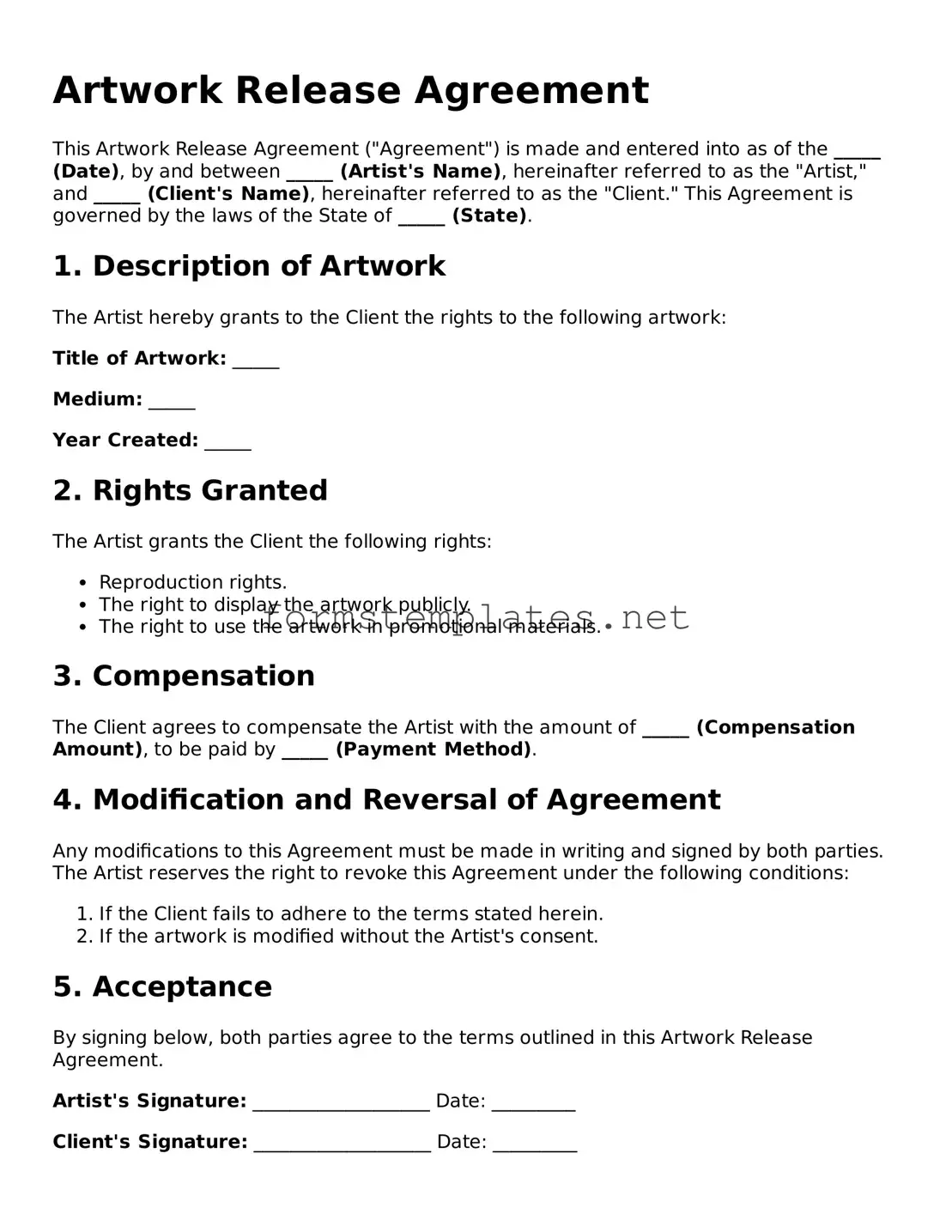Artwork Release Agreement
This Artwork Release Agreement ("Agreement") is made and entered into as of the _____ (Date), by and between _____ (Artist's Name), hereinafter referred to as the "Artist," and _____ (Client's Name), hereinafter referred to as the "Client." This Agreement is governed by the laws of the State of _____ (State).
1. Description of Artwork
The Artist hereby grants to the Client the rights to the following artwork:
Title of Artwork: _____
Medium: _____
Year Created: _____
2. Rights Granted
The Artist grants the Client the following rights:
- Reproduction rights.
- The right to display the artwork publicly.
- The right to use the artwork in promotional materials.
3. Compensation
The Client agrees to compensate the Artist with the amount of _____ (Compensation Amount), to be paid by _____ (Payment Method).
4. Modification and Reversal of Agreement
Any modifications to this Agreement must be made in writing and signed by both parties. The Artist reserves the right to revoke this Agreement under the following conditions:
- If the Client fails to adhere to the terms stated herein.
- If the artwork is modified without the Artist's consent.
5. Acceptance
By signing below, both parties agree to the terms outlined in this Artwork Release Agreement.
Artist's Signature: ___________________ Date: _________
Client's Signature: ___________________ Date: _________
6. Contact Information
Artist's Contact: _____
Client's Contact: _____
